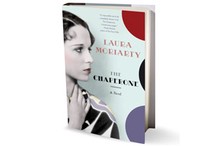New Beach Reads to Blaze Through
Kick back—there's a reason they call them beach reads.

Photo: The Chaperone
12 of 27
The Chaperone
By Laura Moriarty
384 pages;
Riverhead
Laura Moriarty's The Chaperone is the enthralling story of two women—one famous, the other not; one drawn from history, the other mostly imagined—and how their unlikely relationship changed their lives. In 1922 Cora Carlisle, a yearning 36-year-old housewife in Wichita, Kansas, volunteers to escort a rebellious 15-year-old girl by the name of Louise Brooks to New York City so that she can attend classes at the famed Denishawn dance school. From here the book unfolds over more than half a century and portrays Carlisle's dramatic dealings with her own family alongside the sharp rise and fall of Brooks, the iconic silent-movie star of the stern black bob and bangs. This juxtaposition illustrates both the shifting culture (often metaphorically described through fashion: the prison of corsets, the startling androgyny of slacks) and the ways in which loosening mores offer openings for fuller happiness, opportunities that are both seized and squandered. The novel serves as a sort of biography of Brooks, but ultimately it is Carlisle who steals the show. Moriarty—who'd read that Brooks was accompanied on her journey to New York but knew nothing about the specific woman—shows Carlisle growing from a half-formed woman in a sham of a marriage into someone who assembles an unconventional family life, with a husband, lover, and the lover's child living under one roof. Meanwhile Brooks, despite her early liberation, shrinks into a more conventional despair. In this layered and inventive story, Moriarty raises profound questions about family, sexuality, history, and whether it is luck or will—or a sturdy combination of the two—that makes for a wonderful life.
— Neil Casey
Published 05/24/2012


